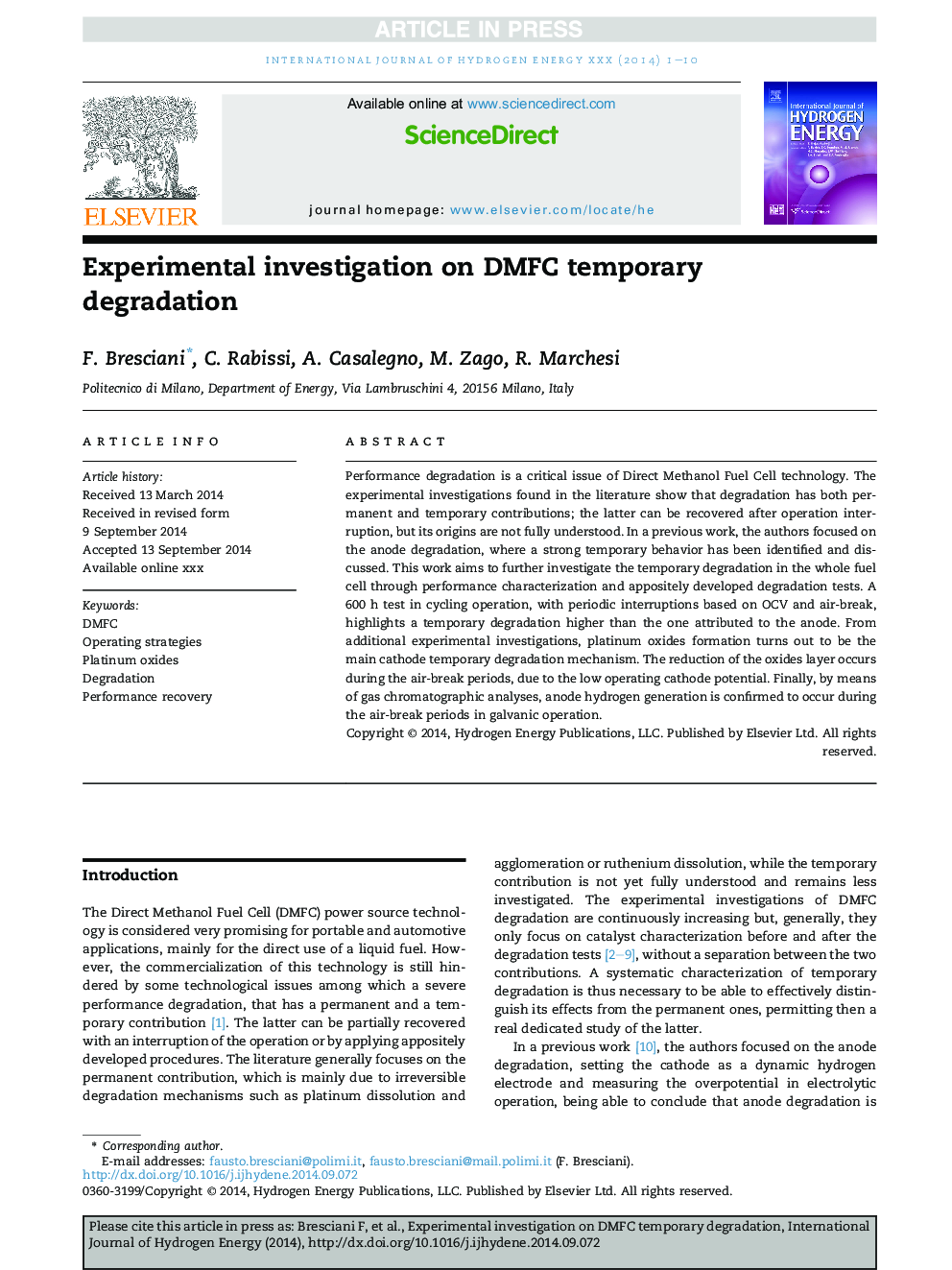| Article ID | Journal | Published Year | Pages | File Type |
|---|---|---|---|---|
| 7717355 | International Journal of Hydrogen Energy | 2014 | 10 Pages |
Abstract
Performance degradation is a critical issue of Direct Methanol Fuel Cell technology. The experimental investigations found in the literature show that degradation has both permanent and temporary contributions; the latter can be recovered after operation interruption, but its origins are not fully understood. In a previous work, the authors focused on the anode degradation, where a strong temporary behavior has been identified and discussed. This work aims to further investigate the temporary degradation in the whole fuel cell through performance characterization and appositely developed degradation tests. A 600 h test in cycling operation, with periodic interruptions based on OCV and air-break, highlights a temporary degradation higher than the one attributed to the anode. From additional experimental investigations, platinum oxides formation turns out to be the main cathode temporary degradation mechanism. The reduction of the oxides layer occurs during the air-break periods, due to the low operating cathode potential. Finally, by means of gas chromatographic analyses, anode hydrogen generation is confirmed to occur during the air-break periods in galvanic operation.
Related Topics
Physical Sciences and Engineering
Chemistry
Electrochemistry
Authors
F. Bresciani, C. Rabissi, A. Casalegno, M. Zago, R. Marchesi,
